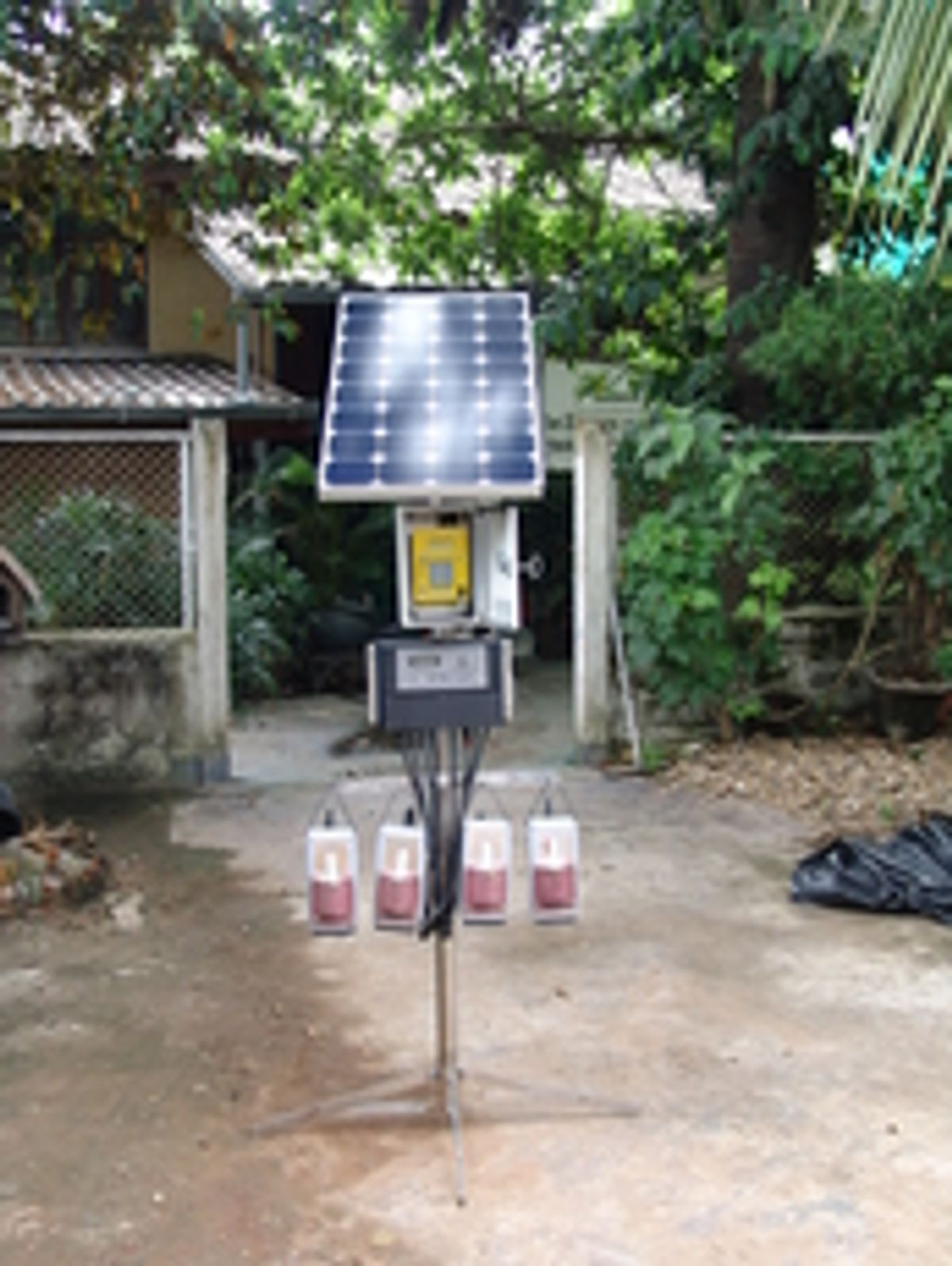Recent mention was made here of Coulomb Technologies' EV charging system, soon to be rolled out in major metropolitan areas around the United States and featured in the current triennial design exhibit at the Cooper-Hewitt National Design Museum in New York City. Coulomb's cute electricity pump is not the only item of interest. Just as photogenic is the electric parasol featured with the headline to this story; almost as useful, potentially, are the solar-rechargeable lanterns (left), which were concocted by a group of Sri Lankan designers and engineers.
It's always good to be reminded that not every promising innovation is necessarily high-tech, electrical or electronic. One of the nicest items at Cooper-Hewitt is a more efficient and less polluting home cooking stove, meant to improve on the biomass-burning stoves that hundreds of millions of women use in India, China and other developing countries. The Chulha stove, developed by an Indian-Dutch collaboration under the aegis of Philips Philanthropy by Design, won two major design awards. It can be inspected in detail at the Philips design website.
"Improved fuel efficiency, a reduction in carbon monoxide and particle emissions, the exclusive use of simple materials like concrete, clay and terracotta, and even the packaging, which is made from recycled woven polypropylene, all contribute to making the stove stand out as an excellent example of eco design," boasts Philips Philanthropy by Design. The main aim with this innovative stove and others is to reduce the catastrophic rates of respiratory illness among the women who use them--an estimated 1.6 million of them die each year, according to Philips.
That's the most important reason but by no means the only reason to cut pollution and reduce carbon emissions from such stoves. Emissions from inefficient biomass stoves also are the major contributor to the Asian brown cloud and to the atmospheric greenhouse gases originating in human activity. V, Ramanathan, the eminent Scripps atmospheric scientist who discovered the brown cloud, has launched a project called Surya, in which the objective is to replace biogas cooking stoves with solar and other gas-free cookers. An authoritative description of brown clouds and their effects can be found in Ramanathan's description of Surya.
According to that report, "about half of the world’s population, and 75 percent of households in India, use biofuels and biomass, including wood, charcoal, crop residues and dung, to prepare food and heat their homes. More than 70 percent of India’s population lives in rural areas. Cooking accounts for about 60 percent of the overall energy and 80 percent of the non-commercial energy used in rural India. More than 90 percent of the cooking is done with fire wood and bovine dung, i.e, cow-dung."



